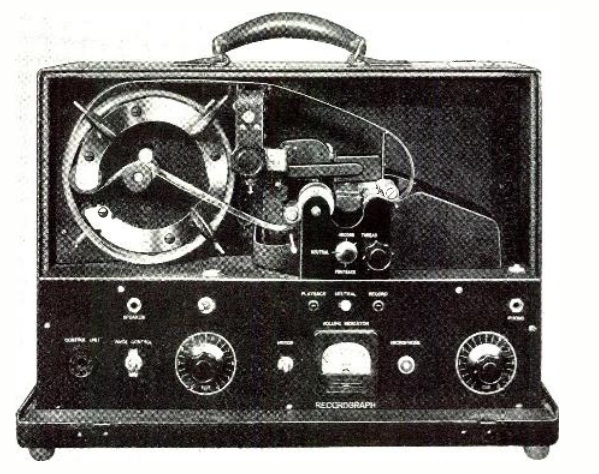Seventy-five years ago this month, the December 1941 issue of Radio News carried a detailed description of a sound recording system that, while very sophisticated for its time, was quickly superseded by magnetic recording, first on wire, and then on tape. The magazine described the sound-on-film recording system employed by the Recordgraph, shown above. This machine recorded sound on 35 mm film, but did not involve photography. Instead, the instrument was a sophisticated phonograph, mechanically carving a groove into the film, which did not have any photographic emulsion. Instead of a disc or cylinder, the grooves were cut into the film.
The great advantage of this system was the large amount of material that could be recorded. The market for the system was law enforcement, which could make sound recordings of, for example, a telephone line. The machine could be switched on automatically whenever a phone was off the hook or a radio carrier present. The film ran in a continuous loop at 20 feet per minute. The film could hold 100 tracks, meaning that only 6-1/4 feet of film were necessary for an hour of recording.
A well preserved example of the Recordgraph can be seen at this link. A similar system, the Tefifon, was commercially produced in Europe, and can be viewed here:
The Recordgraph apparently saw at least some use by law enforcement. The record from this 1949 New York case includes testimony describing how the device was used for telephone monitoring.
While the sound quality of this system is remarkably good, it was quickly supplanted after the war by magnetic recording, first on steel wire and then on magnetic tape. The greatest advantage of magnetic recording was that the wire or tape could be erased and re-used indefinitely.

